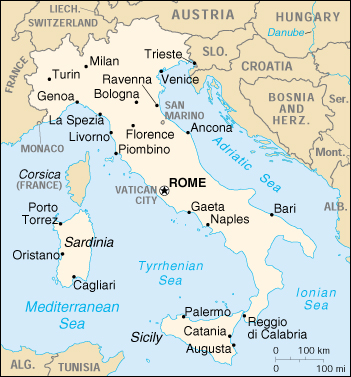

Status Quo Side: Italy
Non-Status Quo Side: Yugoslavia
Region: Europe
Conflict Type: Interstate
Issues in Dispute: Strategic, Territory
After the German collapse, Yugoslavia moved to take over the historic port city of Trieste at the tip of the Adriatic and the Istrian Peninsula, Italian since 1920. But it agreed to temporary Allied occupation of Trieste. The 1947 Italian Peace Treaty established a "free territory of Trieste" with US-UK forces administering the Northern Zone A, including the city, the Yugoslavs Southern Zone B. Prospects for permanence foundered on UNSC failure to agree on a governor. On May 20 1948, prior to critical Italian elections and Yugoslav Communist leader Marshal Tito's break with Moscow, the US, UK, and France proposed returning all of Trieste to Italy. In 1952 Italy was permitted to assume civil positions in Zone A, and Yugoslav proposals for settlement along ethnic lines were rejected.
With each party fearing action by the other to seize disputed areas, the Italian Army and Fleet were placed on alert. Yugoslavia took no immediate countermeasures, but after a US-UK decision to withdraw in favor of Italy in Zone A was announced on October 8 1953, Belgrade threatened to send in troops if Italian forces entered. US-UK acceptance of possible partition quieted the situation and led to eventual agreement outside the UN.
A Memorandum of Understanding was signed providing Italy with Zone A, including the city, with a small strip in the south to go to Yugoslavia. The latter would use the free port, and institute civil authority in Zone B.
The two countries assumed control of their zones.